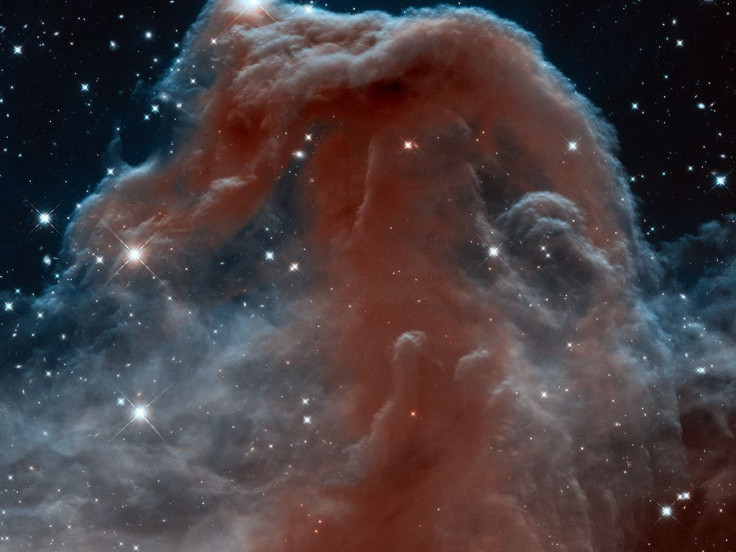Hubble Space Telescope Captures Creepy Image Of Horsehead Nebula

KEY POINTS
- The Hubble Space Telescope snaps a photo of the Horsehead Nebula
- The nebula's shape was formed by the collapse of nearby cosmic clouds
- The nebula will disintegrate within a couple of million years
NASA and the European Space Agency’s Hubble Space Telescope was able to capture an eerie-looking dark nebula that resembles the head of a horse. According to the agencies, the nebula has a couple of million years before it completely disappears.
The cosmic structure featured in Hubble’s photo is Barnard 33, also known as the Horsehead Nebula due to its unusual shape. It is located about 1,400 light-years from Earth and lies within the Orion constellation.
The nebula’s distinct shaped was formed after the collapse of an interstellar cloud composed of various cosmic materials such as gas and dust. Due to a nearby hot star, the nebula has an eerie glow. This provides the nebula with an unusual appearance that the ESA described as something resembling a seahorse rising from the water.
Although the nebula’s surrounding material has already collapsed, its structure remains relatively intact due to its sturdier composition. However, this doesn’t meant that the nebula will remain forever. According to the ESA, the Horsehead Nebula only has a couple of million years before it completely disappears.
“The gas clouds surrounding the Horsehead have already dissipated, but the jutting pillar is made of stronger stuff — thick clumps of material — that is harder to erode,” the ESA explained in a statement. “Astronomers estimate that the Horsehead formation has about five million years left before it too disintegrates.”
In addition to its composition, the Horsehead Nebula’s eerie appearance is also caused by the wavelengths of light emitted by the nearby cosmic structures. One of these is the nebula IC 434, which gives off a glowing dark red emission that emphasizes the silhouette of the Horsehead Nebula.
Another nearby nebula, known as NGC 2023, adds a darker shade of blue to Hubble’s image due to the light emitted by its nearby star, which can be spotted near the lower left of the photo.
Of course, these colors are not visible to the human eye. But, through the space telescope’s imaging capabilities, it is able to detect and show the different infrared wavelengths of the Horsehead Nebula.
© Copyright IBTimes 2024. All rights reserved.





















